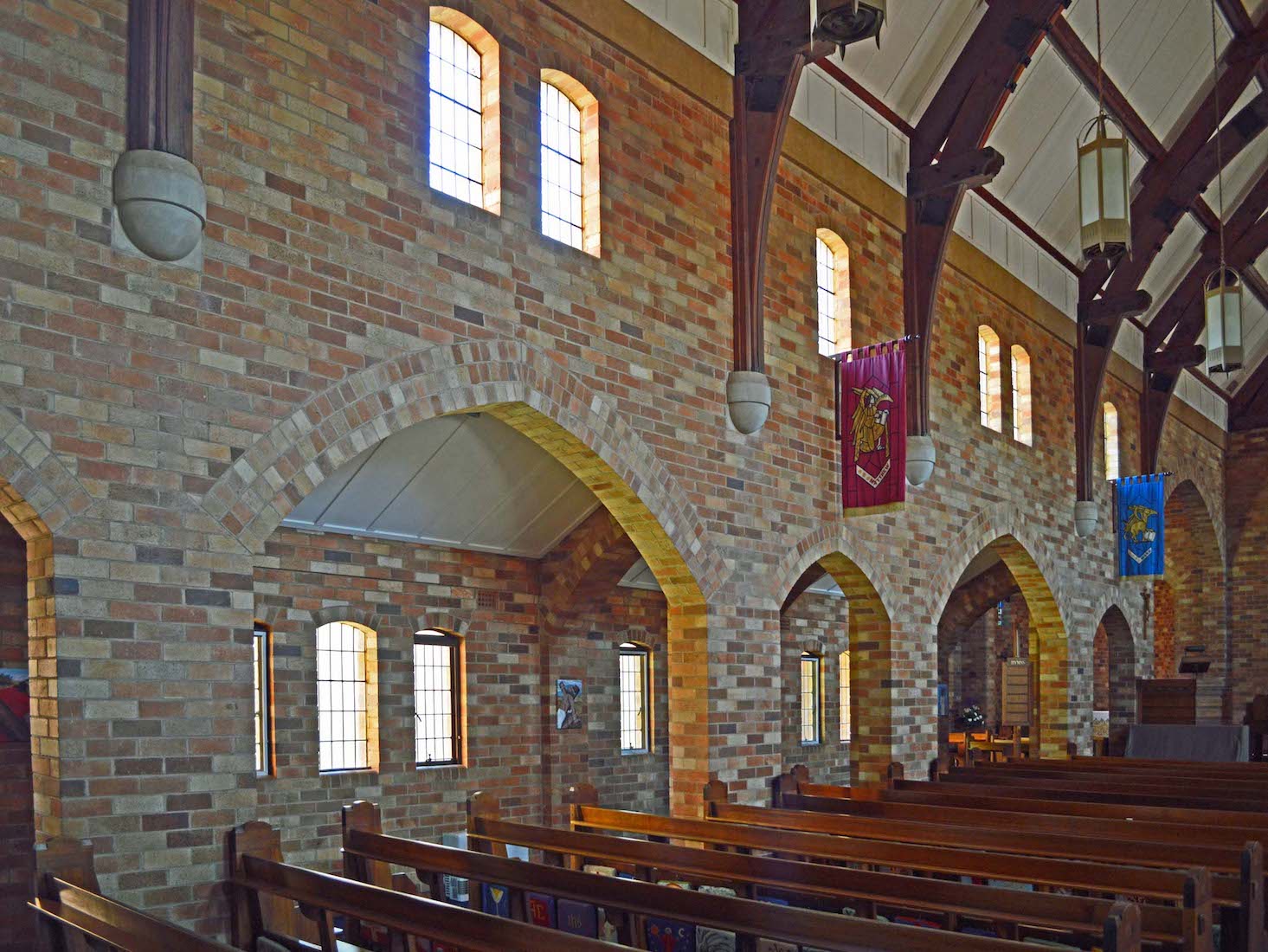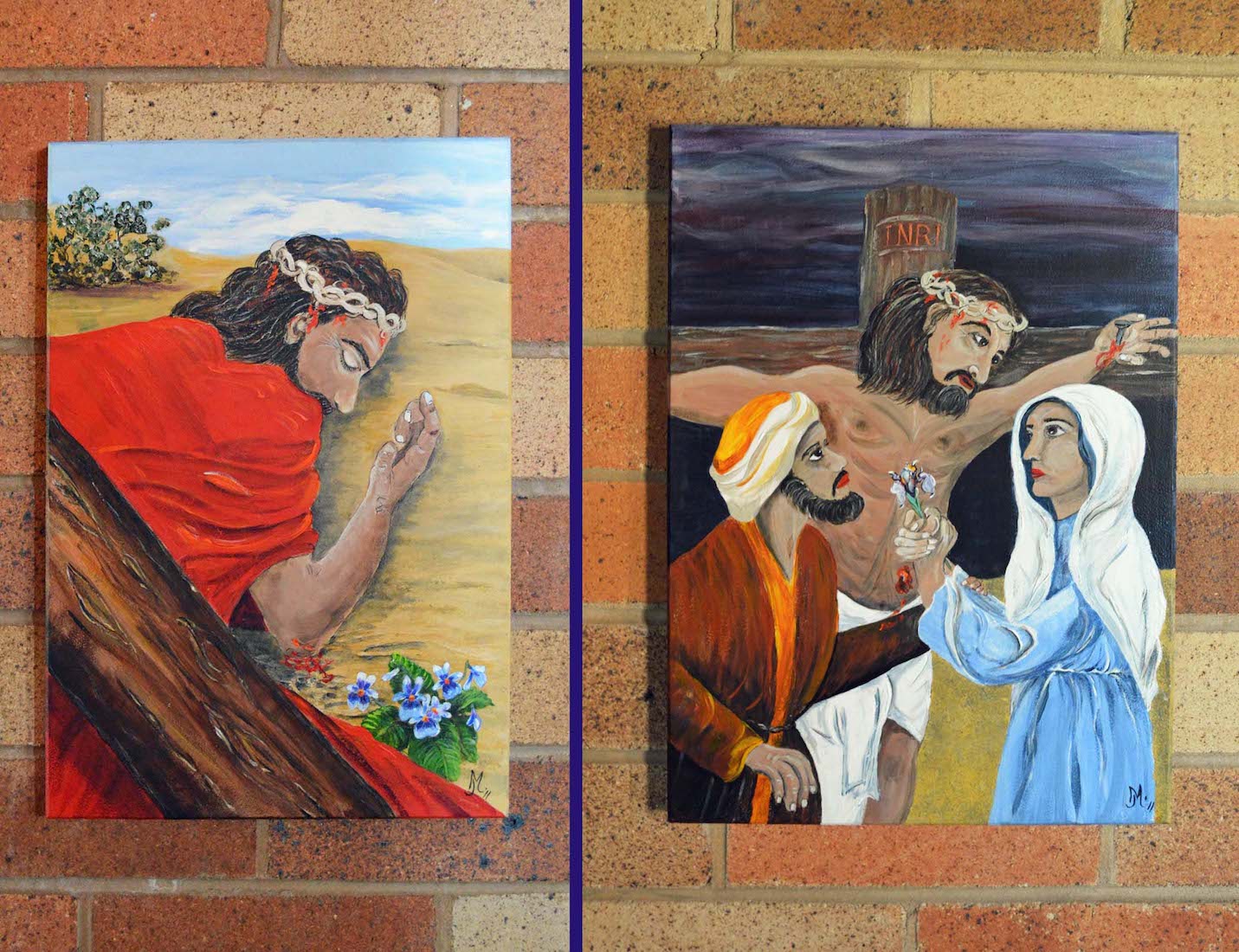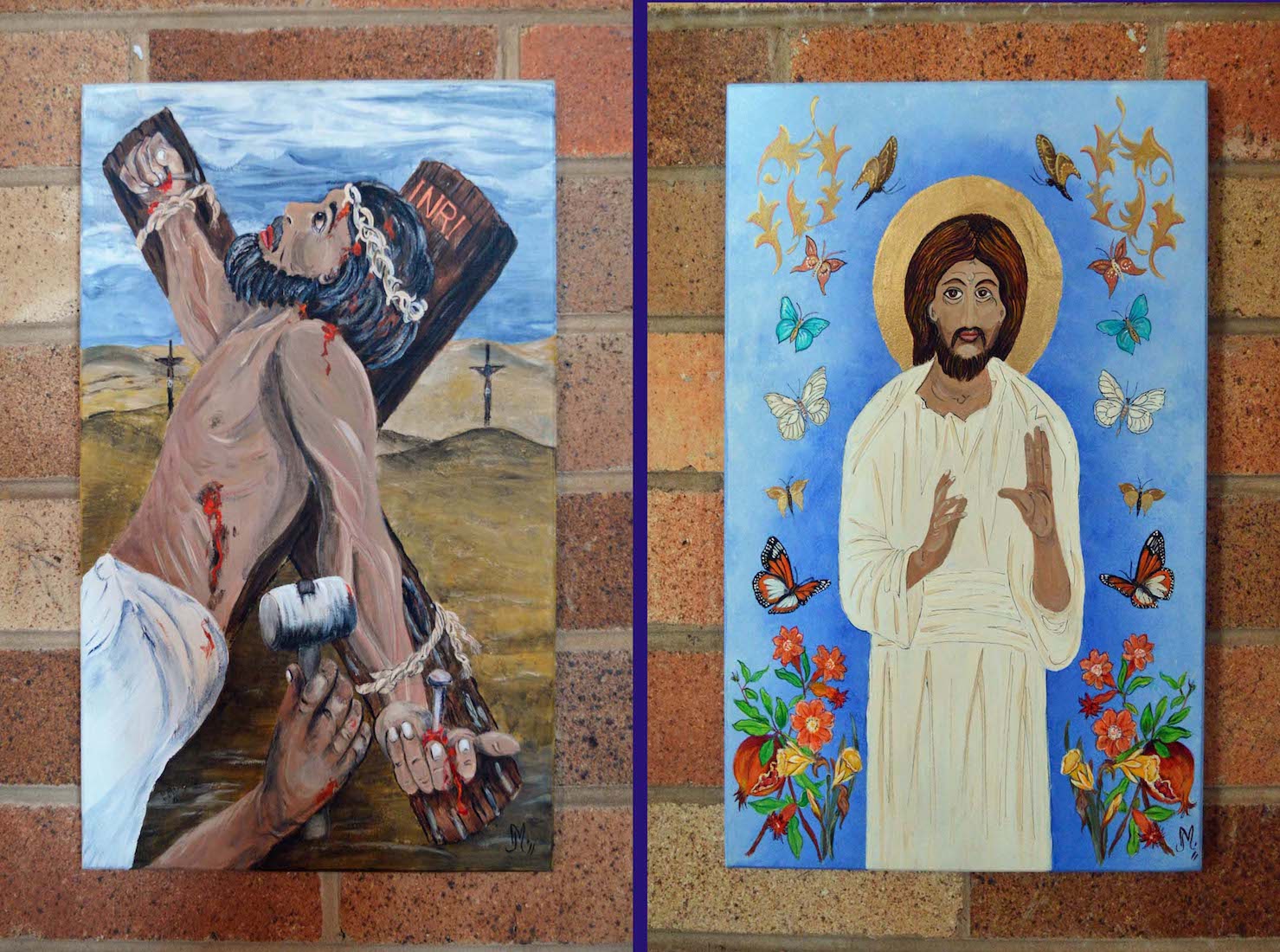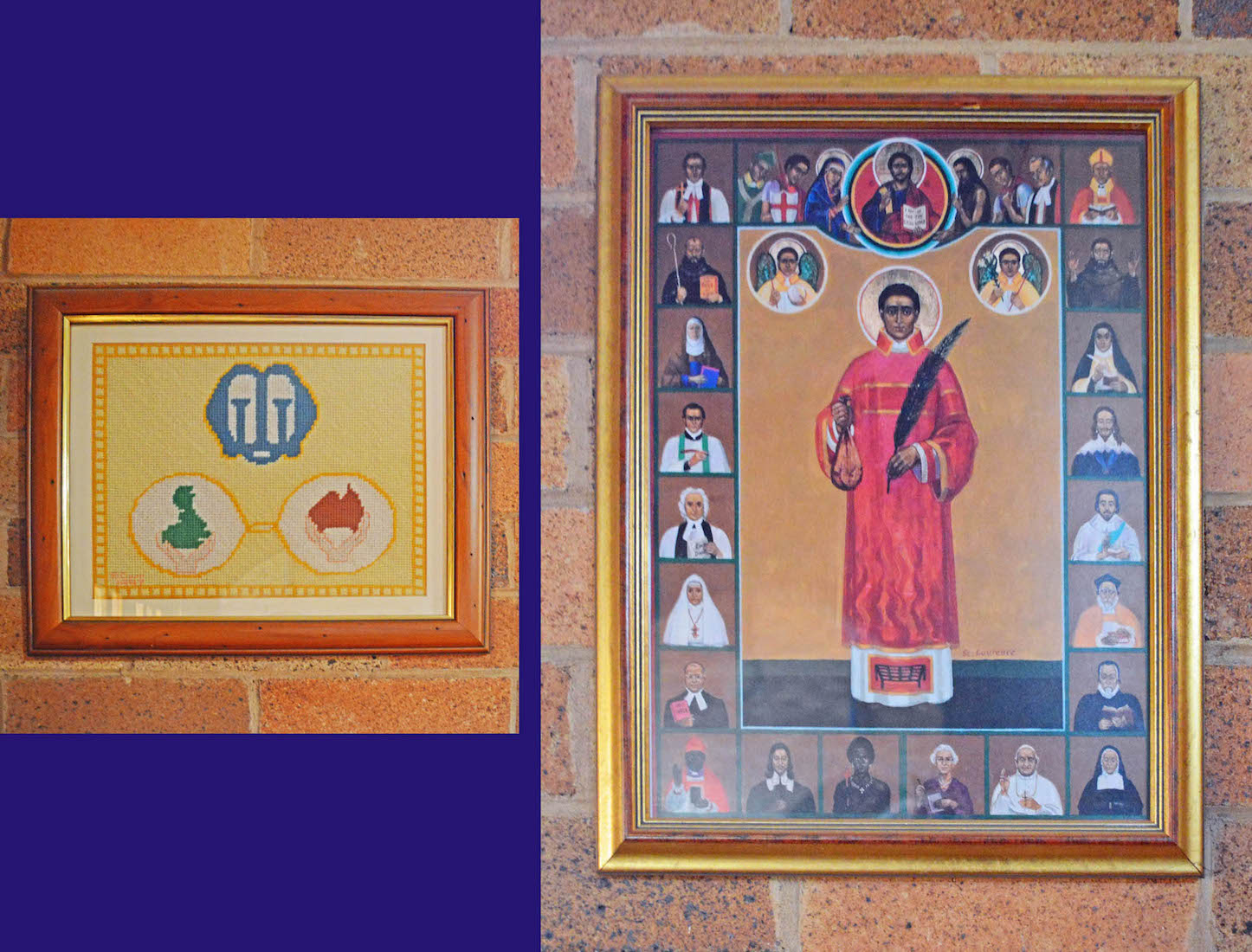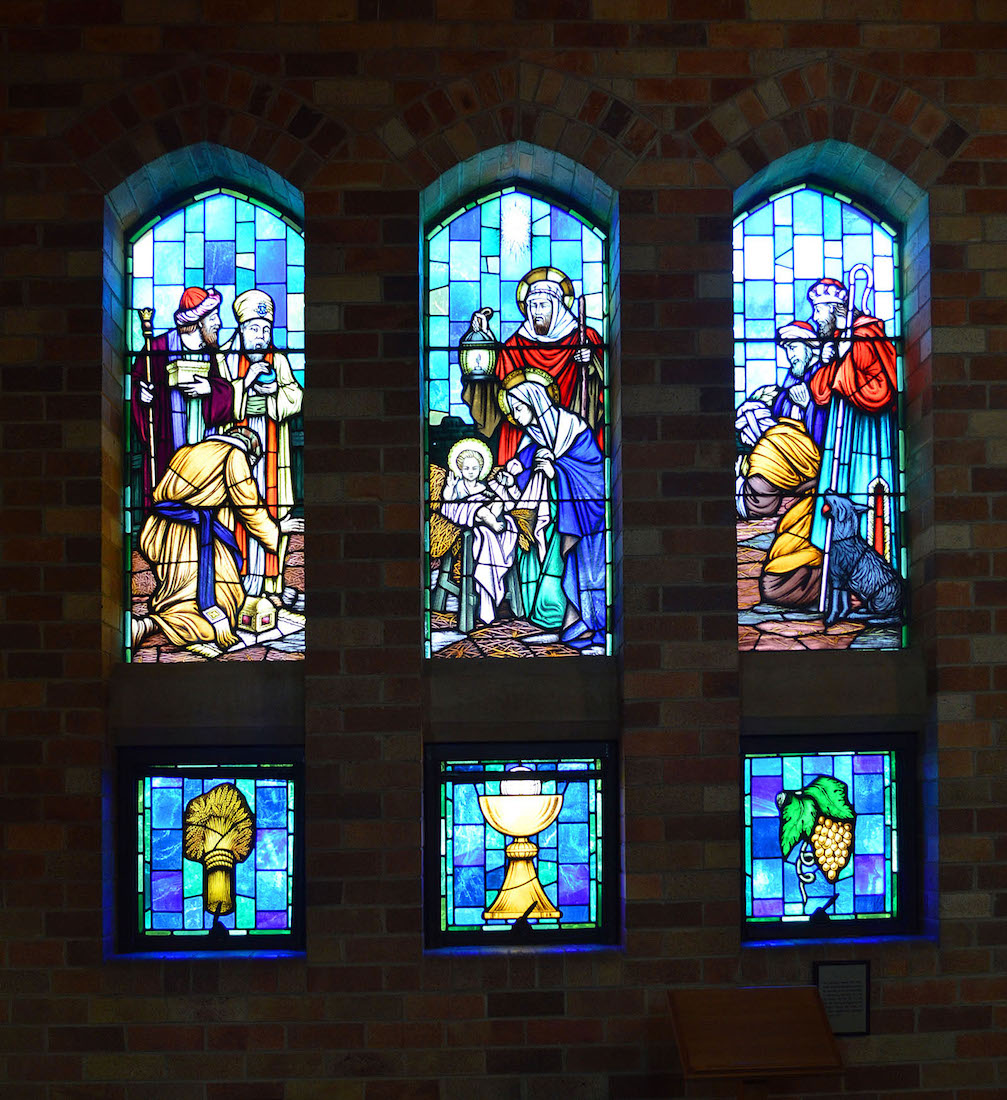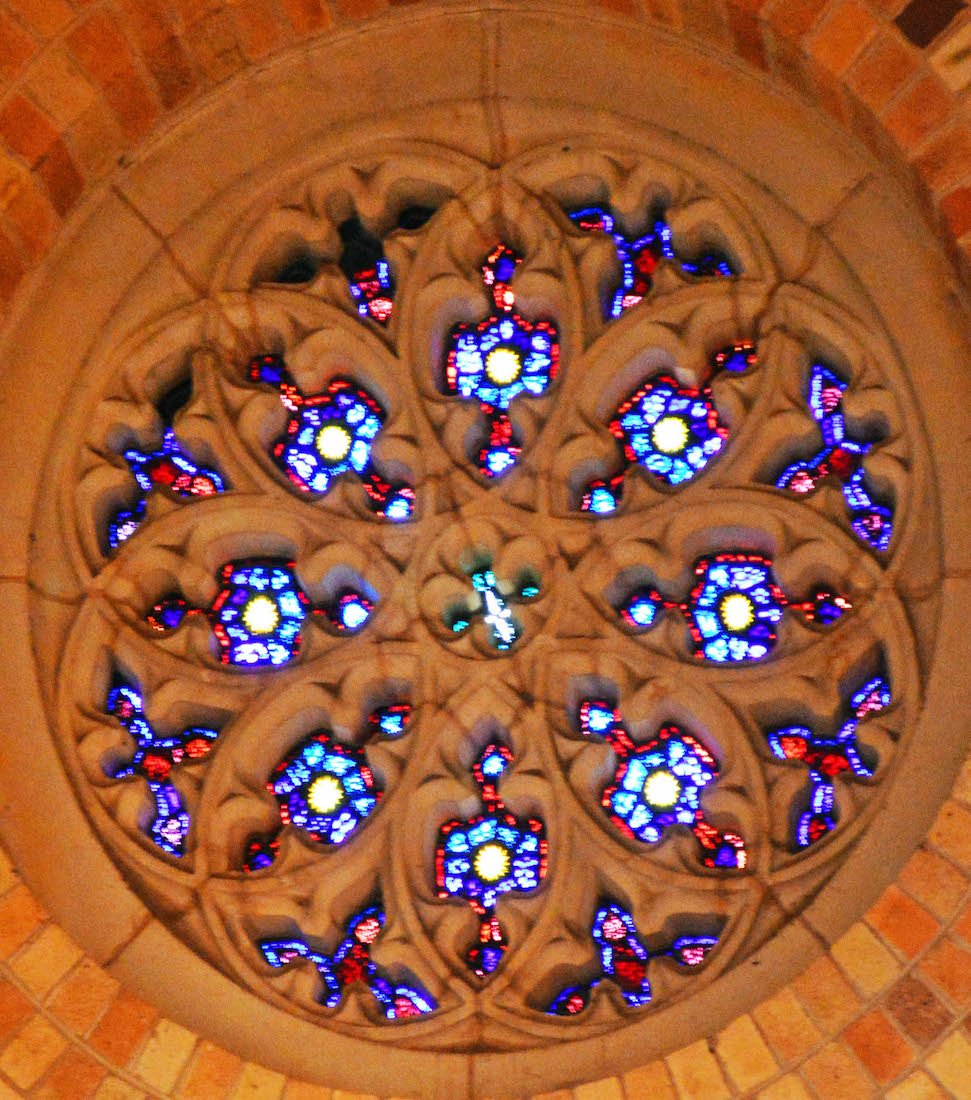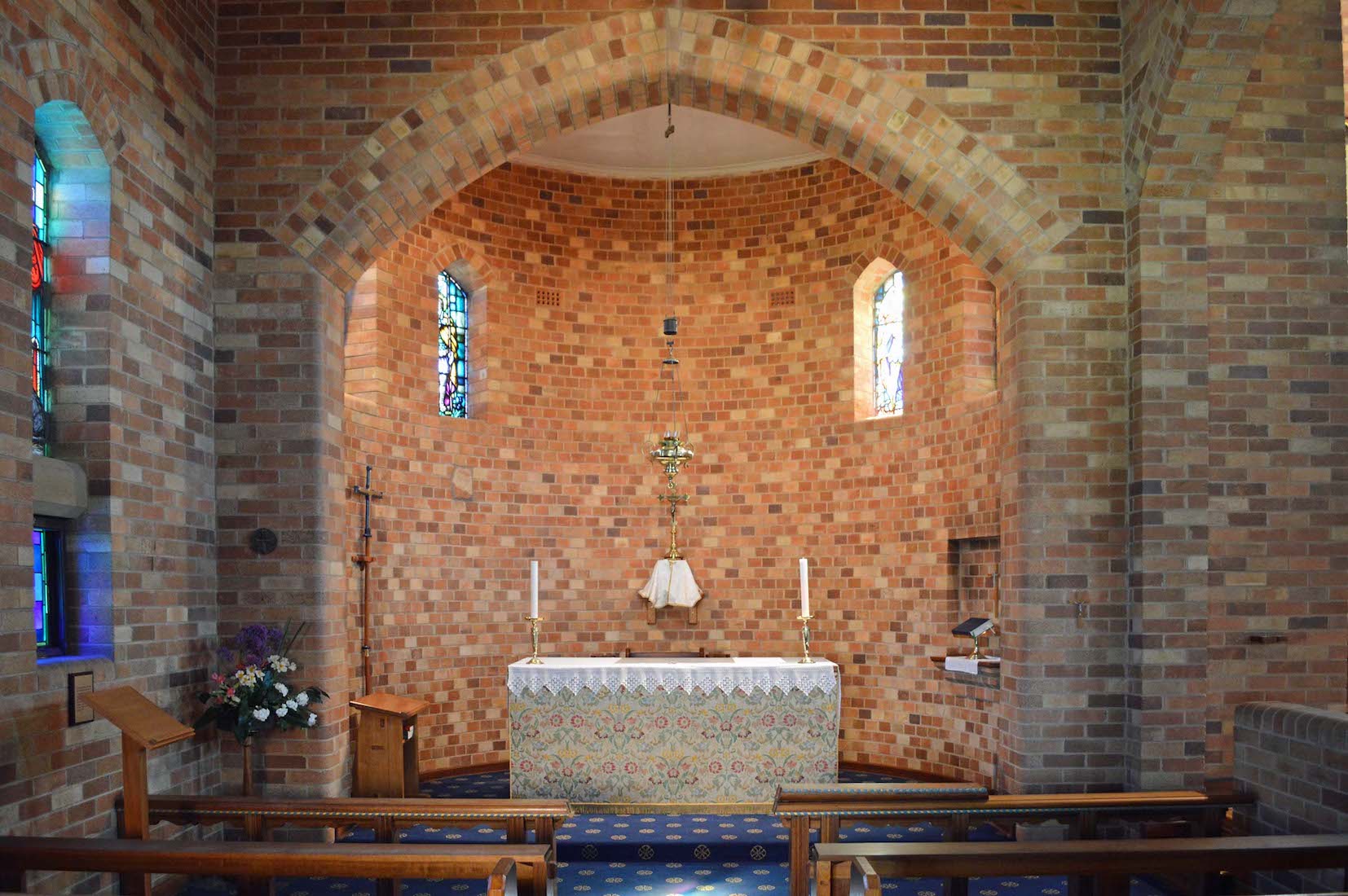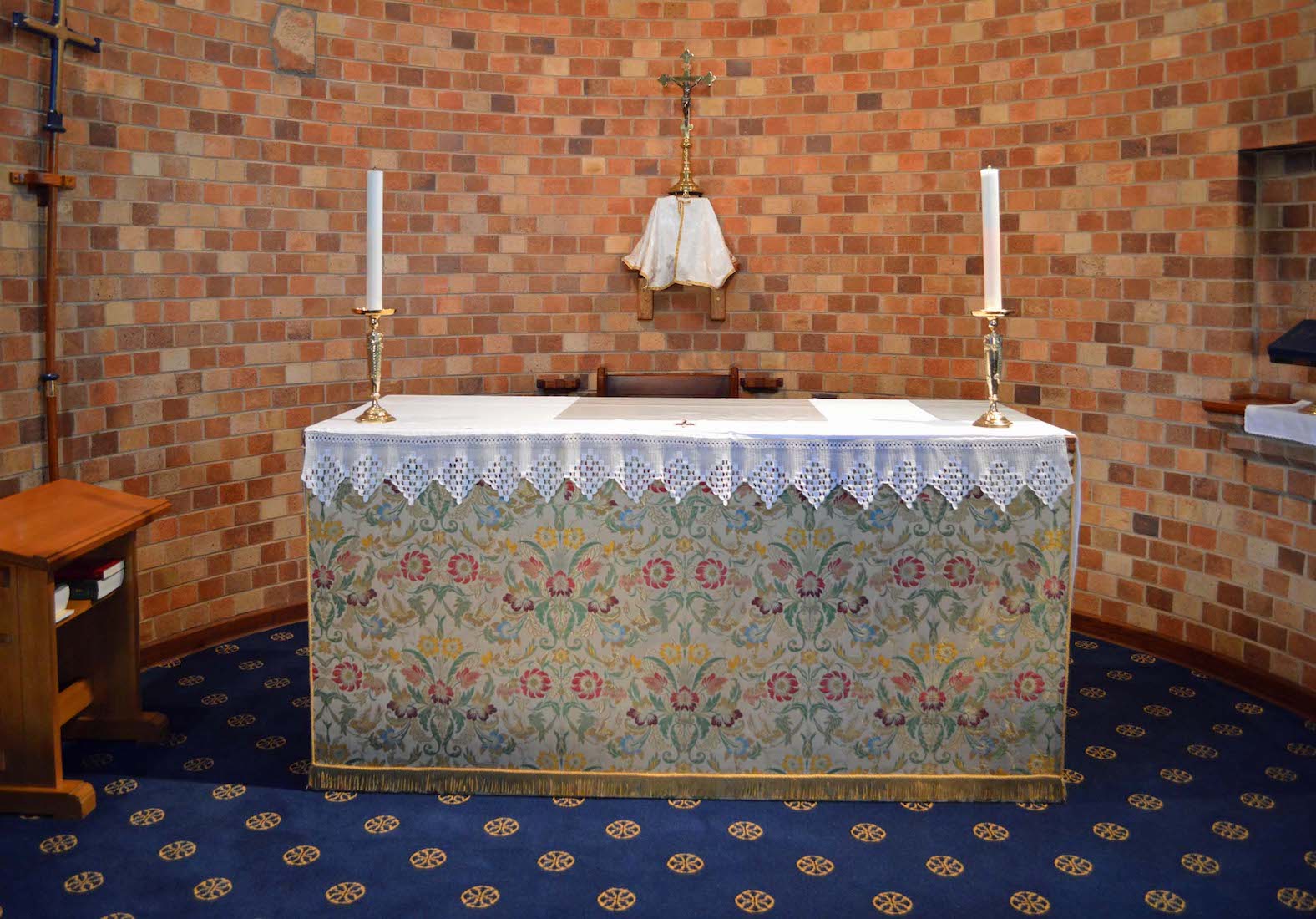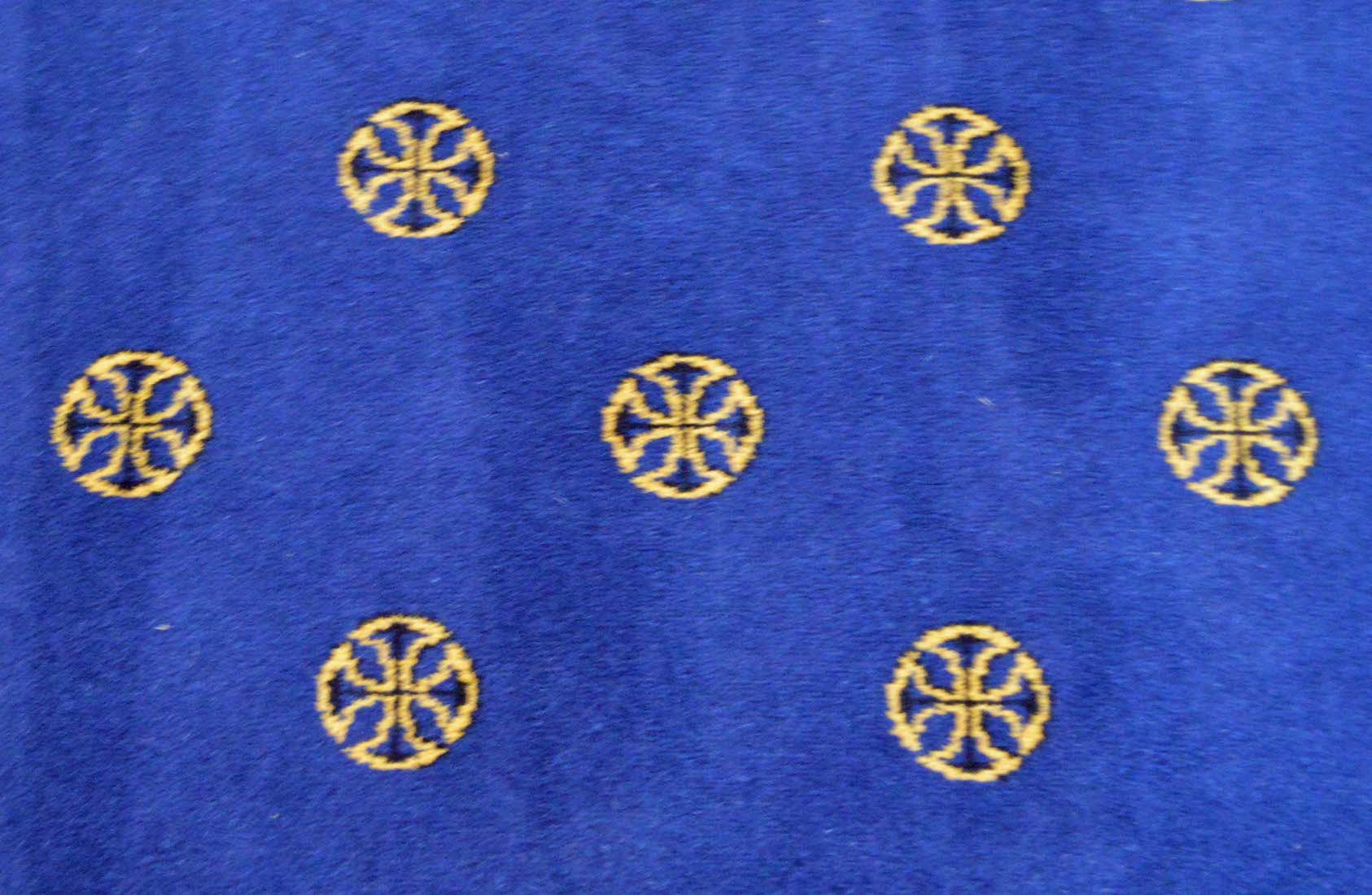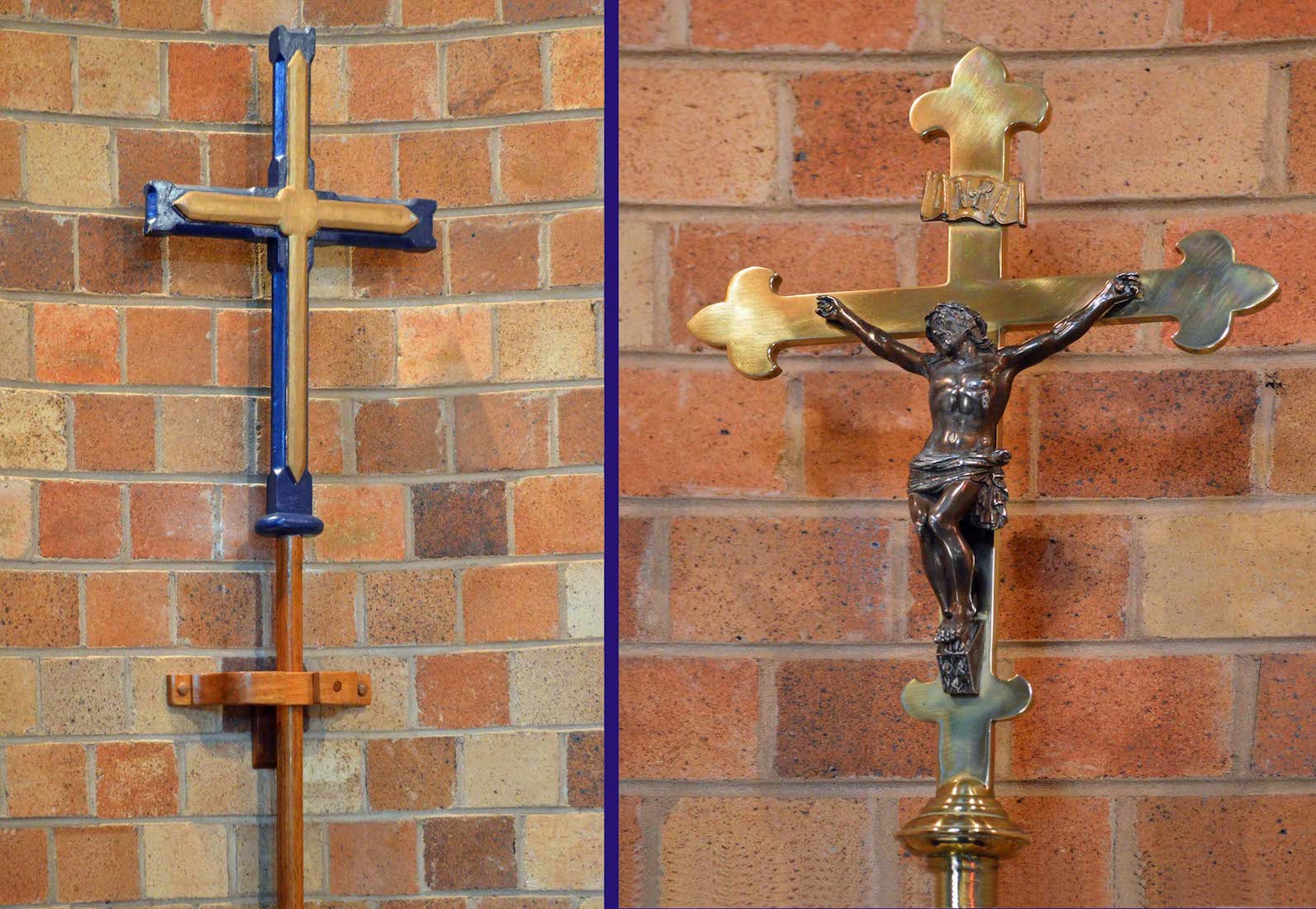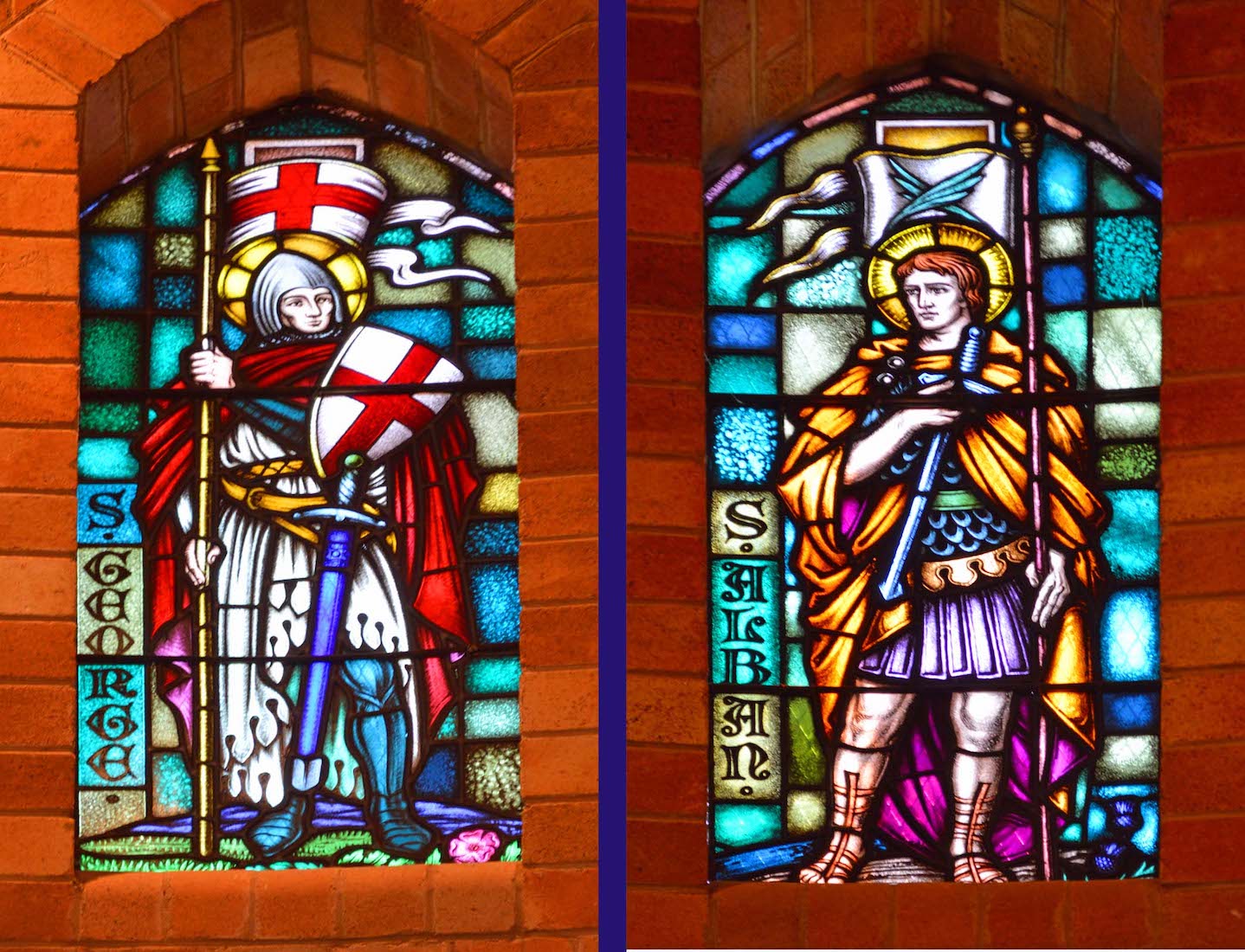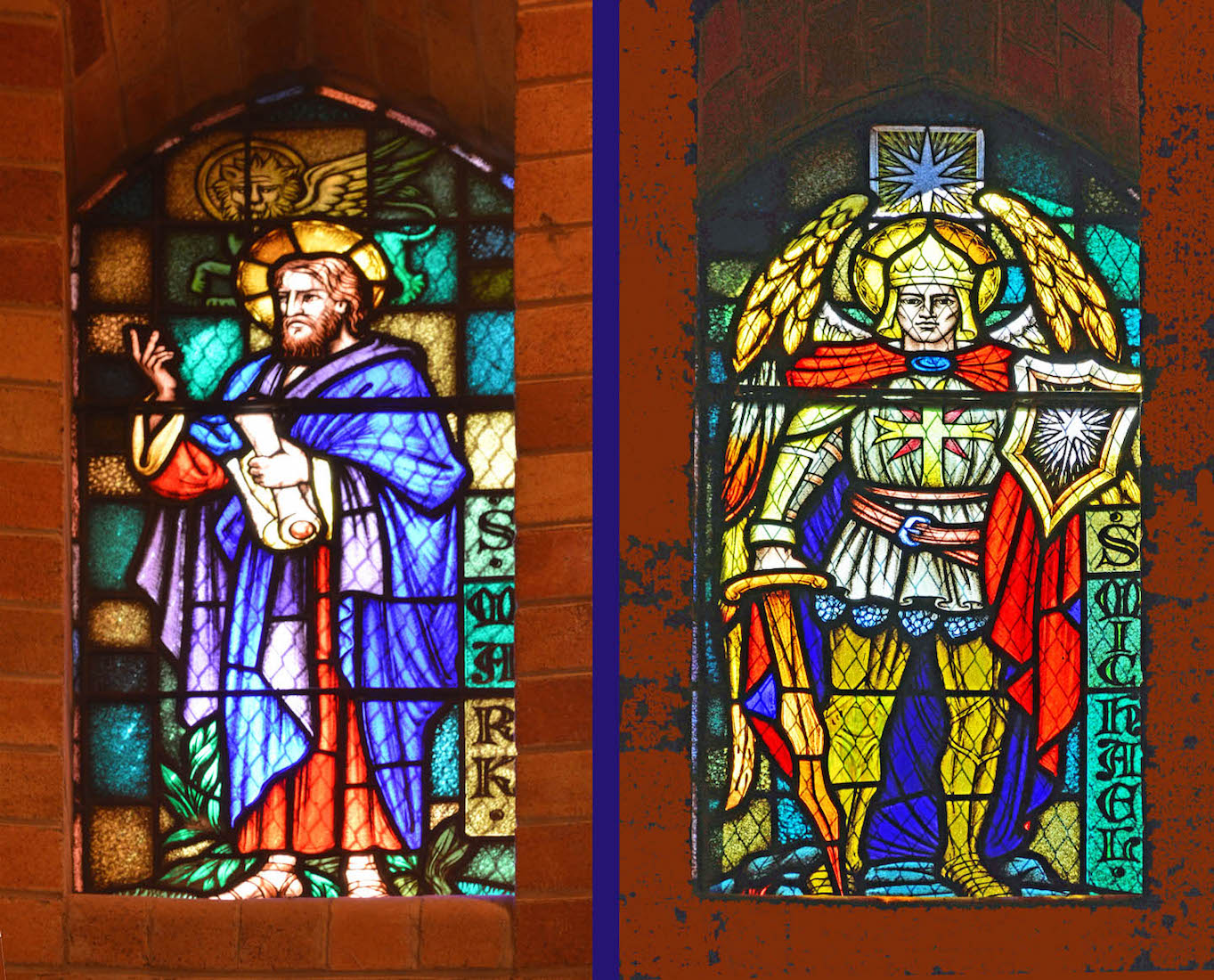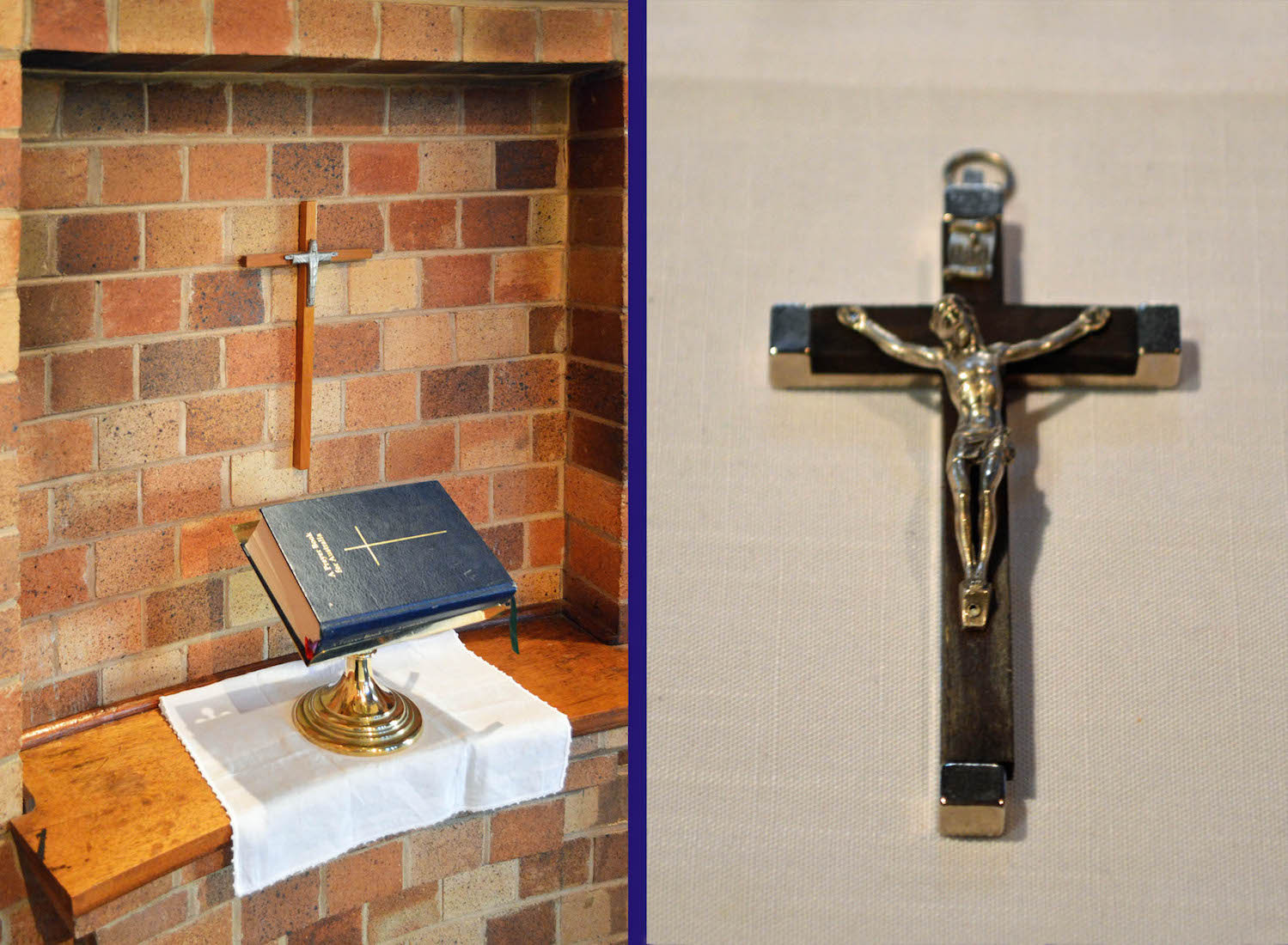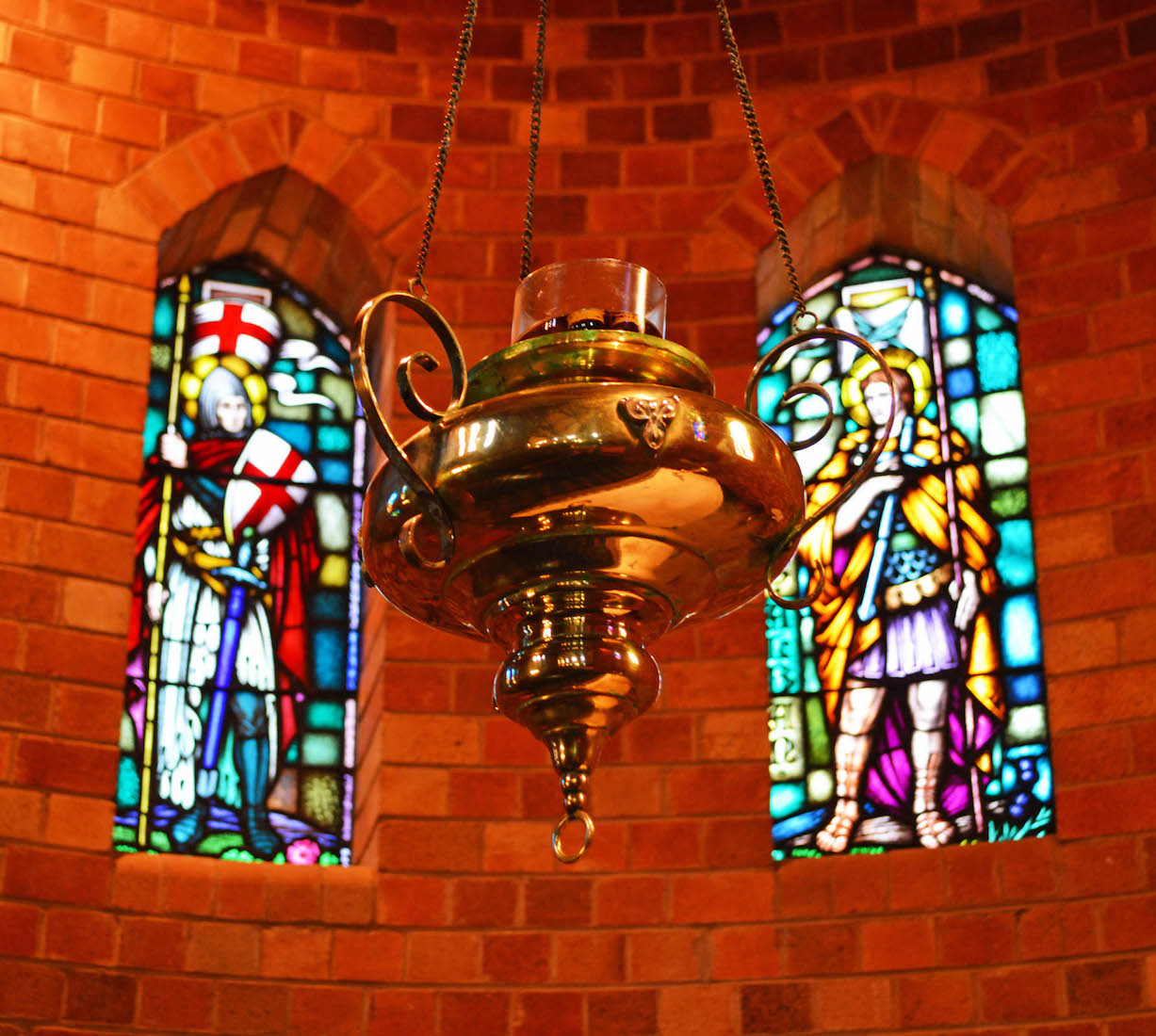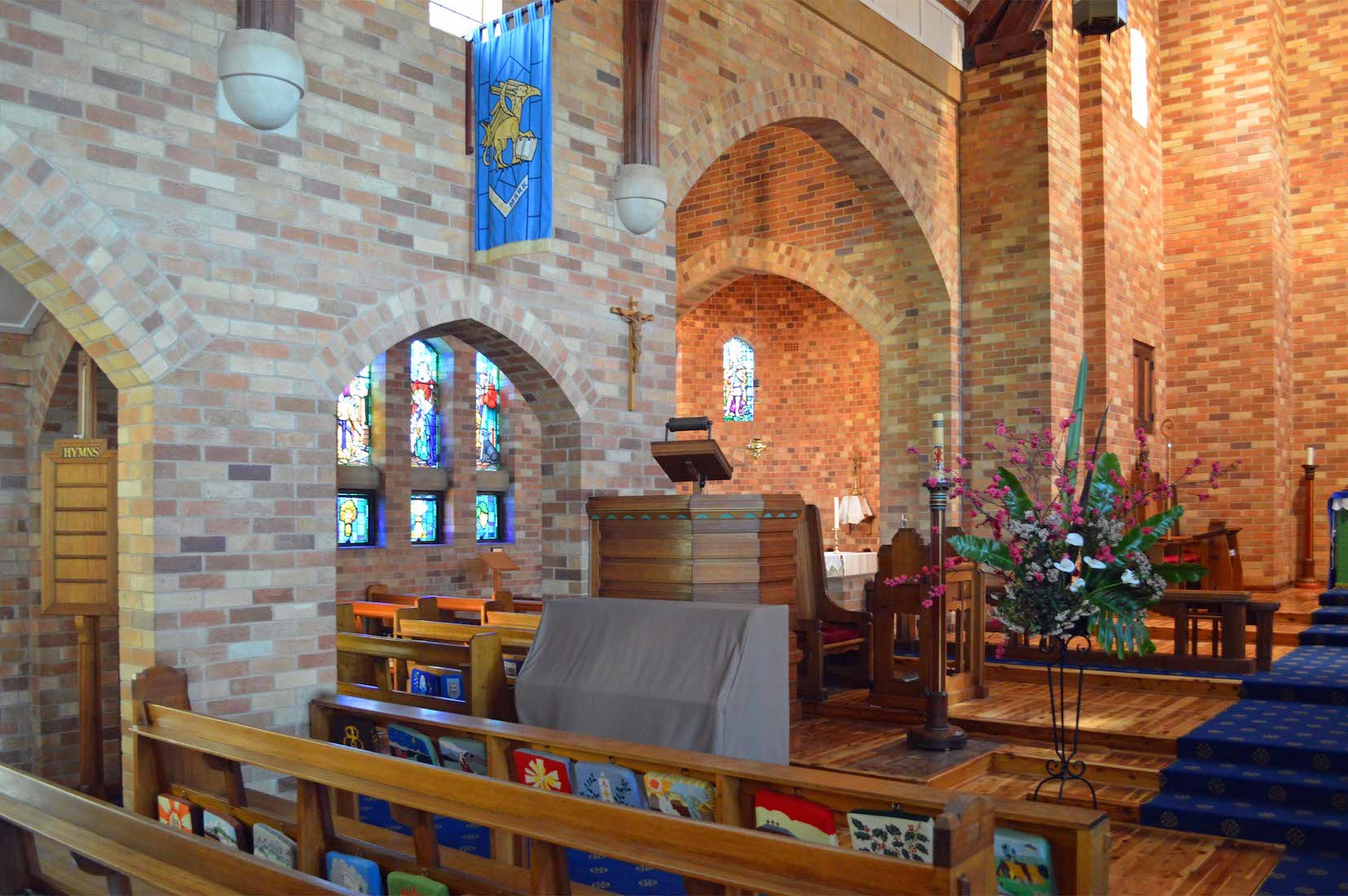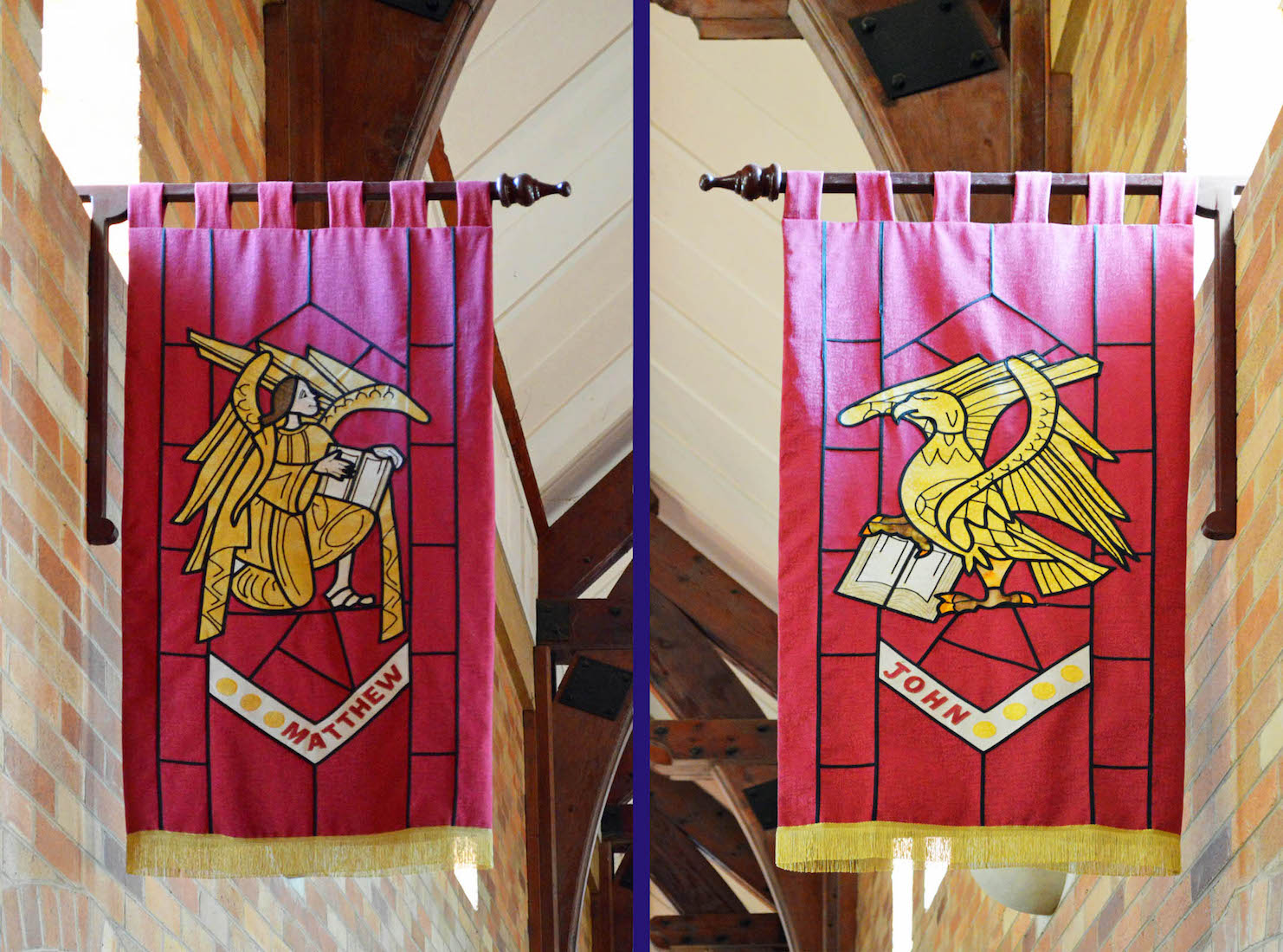
The hanging banners in the nave represent the four evangelists, Matthew, Mark, Luke and John. Traditionally, each evangelist is represented by a symbol, and these are shown here: an angel for St Matthew, and an eagle for St John. PLAN
22. FORWARD NAVE BANNERS
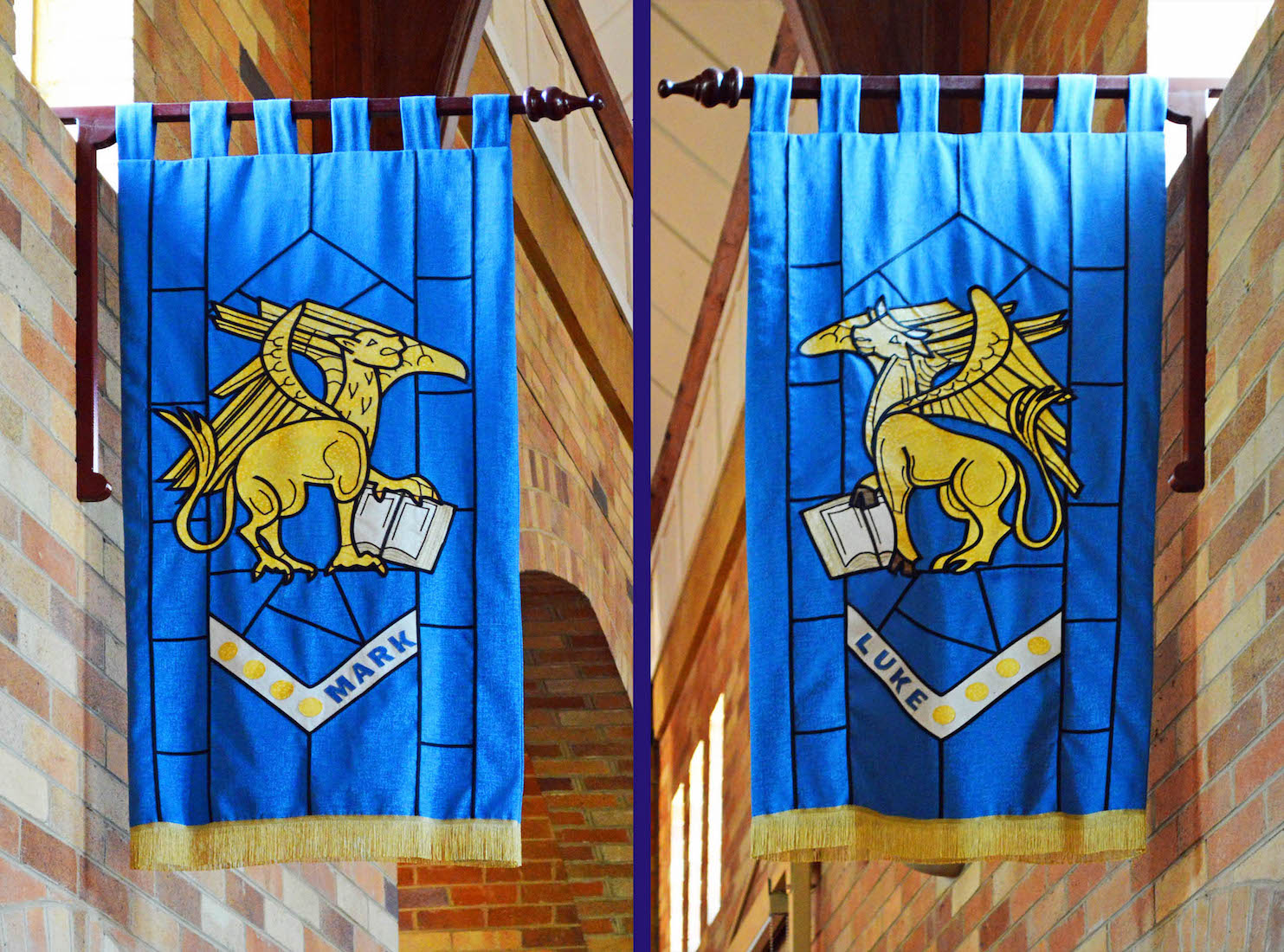
The remaining pair of blue banners represent St Mark and St Luke. The symbol for Mark is a winged lion (courage and monarchy); the symbol for Luke a winged ox or bull (sacrifice, service, strength).
23. NORTH NAVE AISLE
We continue our tour of the Cathedral by walking down the North aisle. In fact there is little to see here: both the nave windows and the clerestory windows are of plain glass. However there is a set of modern stations of the cross.
24. STATIONS OF THE CROSS
Traditionally there are 14 stations of the cross, depicting events from the day of the crucifixion of Jesus. The modern stations in this Cathedral are neither named nor numbered, so identifying them is a little difficult. Probably here we have IX Jesus falls for the third time, and XII Jesus directs John to take care of Mary.
25. STATIONS OF THE CROSS
A further two stations of the cross: at left, XI Crucifixion – Jesus is nailed to the cross. Sometimes a 15th ‘station’ is included to denote the Risen Christ, and this would appear to be the case with the figure at right with its theme of new life. The stations are an aid to devotion, particularly at Easter time.
27. HANDCRAFT AND PICTURE
The handcraft at left carries the MU Mothers Union logo, and shows the link between the United Kingdom and Australia. The picture at right is untitled but appears to show St Laurence who died by roasting on an iron grill. His mission was to the poor and needy.
28. ST ALBAN
These three items on the North wall of the transept all relate to St Alban. The plaque reads: ‘The handmade Roman Tile under the St Alban stained glass window in the Sanctuary is from the ancient city of Verulamium and dates from the 2nd century AD. The tile is a gift from the Dean and Chapter of the Cathedral Church and Abbey of St Alban England and presented in August 1998.’
29. TRANSEPT WINDOWS
The three upper windows depict the birth of Jesus. At centre is a Nativity Scene, to the left the appearance of the (traditionally) three wise men, and to the right, some rather regal looking shepherds. Below at the centre are the Eucharistic elements, and on either side, the contributing wheat and grapes.
30. TRANSEPT ROSE WINDOW
This small and attractive rose window is constructed with eight interlocking circles. The major feature appears to be eight flowers, and it is possible that the designs around the outer edge are birds. The colours are predominantly red and blue.
32. CHAPEL ALTAR
The focal point of this chapel is this altar bearing two candles, and the crucifix on the wall behind.
33. CATHEDRAL CARPET
The Cathedral is carpeted in a dark blue carpet with a pattern of round, golden Celtic crosses placed in a diagonal lattice formation. This carpet is used in the nave and both chapels. The carpet was laid in 2014.
34. CROSS AND CRUCIFIX
There are a number of small crosses and crucifixes in the Chapel of the Blessed Sacrament. The cross at right is in the form of the fleur-de-lis with its lily shaped ends. Above the figure of Christ is inscribed ‘INRI’, standing for ‘Jesus the Nazarene, King of the Jews’ – the inscription ordered by Pilate, as in John 19:19.
35. CHAPEL WINDOWS I
There are four stained glass windows in the Chapel of the Blessed Sacrament. The two at left picture St George (depicted as a Crusader) and St Alban. St George is the patron saint of England. St Alban refused to renounce his faith and declared “I worship and adore the true and living God who created all things.” (These words are still used in prayer at St Alban’s Abbey, England).
36. CHAPEL WINDOWS II
The two windows at the right side of the Chapel sanctuary depict St Mark and St Michael. St Mark is known as the writer of the second Gospel, but he also accompanied Paul and Barnabas on their missionary journeys. St Michael is the Archangel.
37. CROSS AND CRUCIFIX
The Chapel of the Blessed Sacrament could also be called the Chapel of Crosses and Crucifixes!
38. SANCTUARY LAMP
The Cathedral’s sanctuary lamp hangs in the Chapel of the Blessed Sacrament. This lamp burns continuously, as a symbol of the presence of God in this place. The Bible has many references to God in terms of light: for example ‘God is light’ (John 1:5), ‘Jesus said, “I am the light of the world” ’ (John 8:12).
39. NORTH EAST ASPECT
This view from the nave looks across the Chapel of the Blessed Sacrament. We notice the position of the pulpit, and catch a glimpse of the cathedra at right.
40. PULPIT AND CRUCIFIX
It is from the pulpit that God’s Word is proclaimed week by week. The small crucifix above the pulpit is in contrast to the large empty altar cross on the East wall, with the implicit message that Christ is Risen. Good News indeed!


